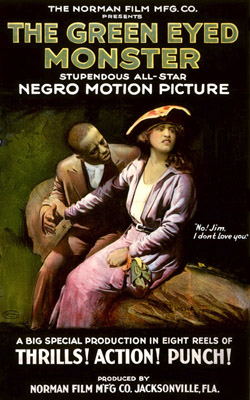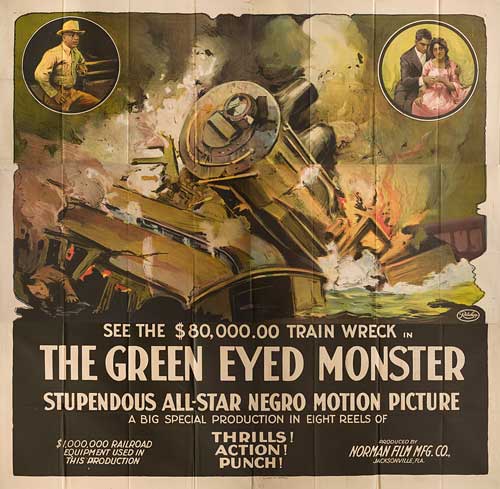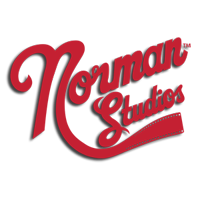 Silent filmmaker Richard Norman first found success with local productions of a film called The Wrecker, featuring white casts living and working in the Midwestern and Southern towns he visited during the late 1910s. During this period, he lived and worked for a time in Chicago, home to a bustling community of African American artists, musicians and filmmakers – including one Oscar Micheaux, widely regarded as the father of black film.
Silent filmmaker Richard Norman first found success with local productions of a film called The Wrecker, featuring white casts living and working in the Midwestern and Southern towns he visited during the late 1910s. During this period, he lived and worked for a time in Chicago, home to a bustling community of African American artists, musicians and filmmakers – including one Oscar Micheaux, widely regarded as the father of black film.
Having befriended Micheaux (at least via letters) and intrigued by the niche market potential of “race films” starring black actors playing all roles – heroes and villains, alike – Norman set about a new genre of film. He took a chance on the localized successes of The Wrecker, retooled the script, hired an all-black cast and produced The Green Eyed Monster in 1919.
It was a bit of a risk that initially proved a failure. African American audiences responded favorably to the dramatic story of racial uplift and achievement expressed in the film, but were unimpressed with the new comedic elements. So, Norman headed back into the editing room, cutting the comedic elements and remixing them into their own slapstick romantic comedy called The Love Bug. In 1920, he re-released The Green Eyed Monster as a dramatic film and often screened The Love Bug as a pre-feature extra. The combination proved successful. 
In fact, so successful was The Green Eyed Monster in distribution that George P. Johnson of the Lincoln Motion Picture Co., a contemporary of Norman Studios also producing race films, called it the “most sensational negro film made.”
“Sensational” certainly is an apt description. The Green Eyed Monster centers on a passionate love triangle and a cut-throat competition between two train companies to land a high-dollar mail contract. Scenes included a rescue from burning car, fist fights, a pistol duel, an abduction, a locomotive chase, and a violent train wreck reported to cost $80,000 to produce – a fortune in those days. Unfortunately, no known clips of the film survive.
The Green Eyed Monster also was the film debut for Steve “Peg” Reynolds, the longtime friend and “one-legged marvel” who would appear in all of Norman’s race films and accompany him to promote film premieres.

